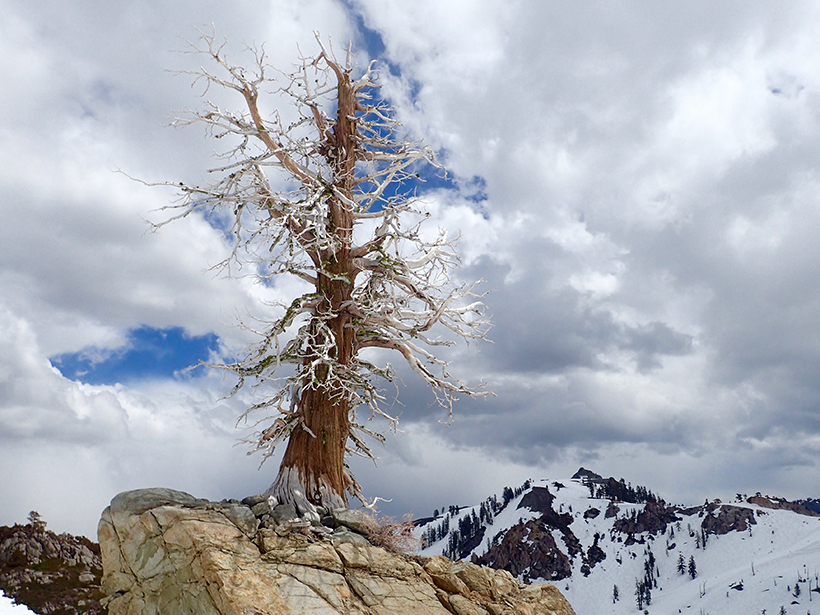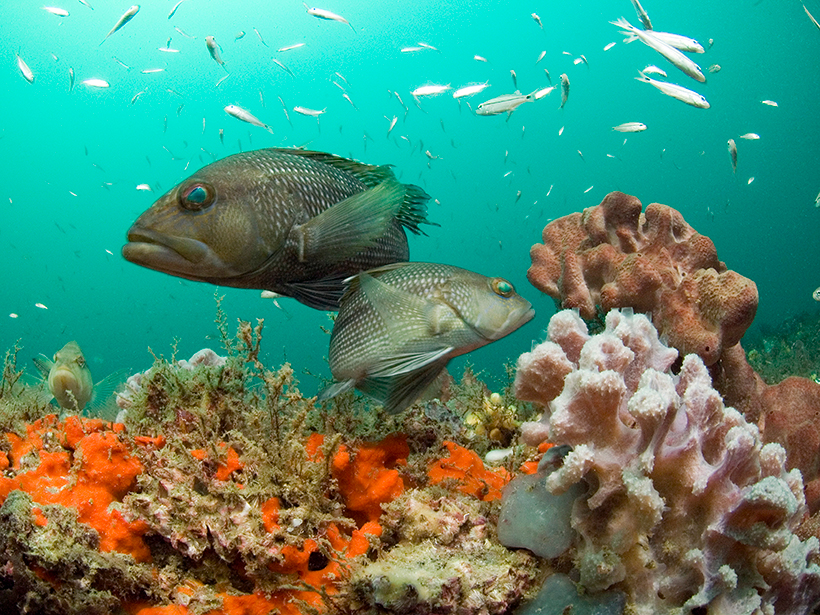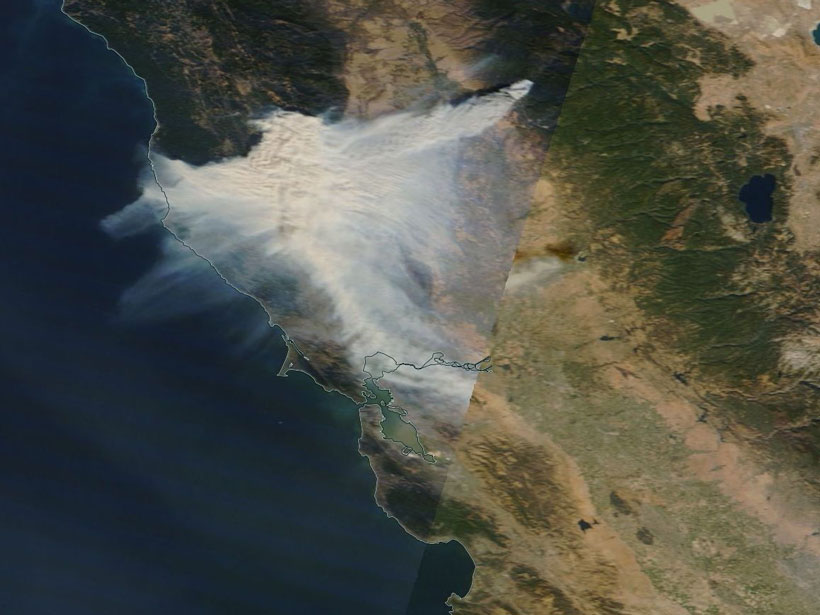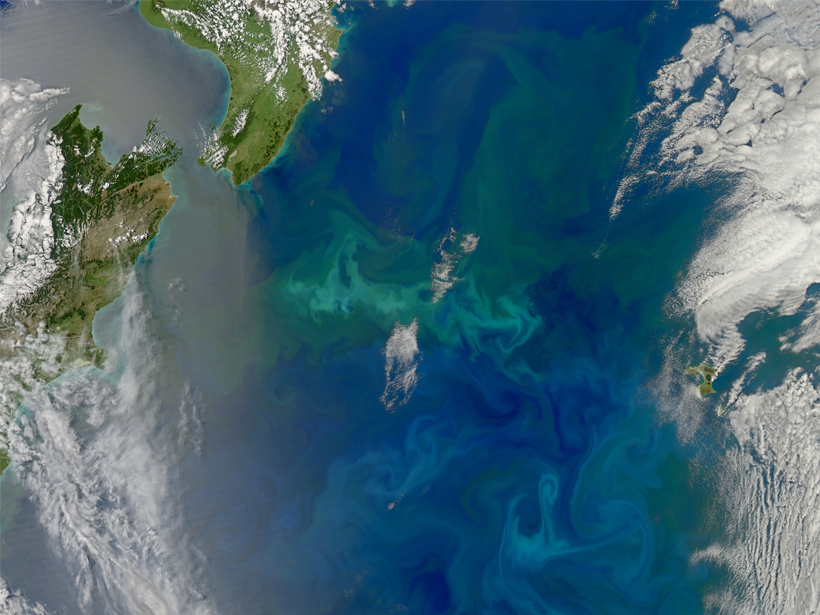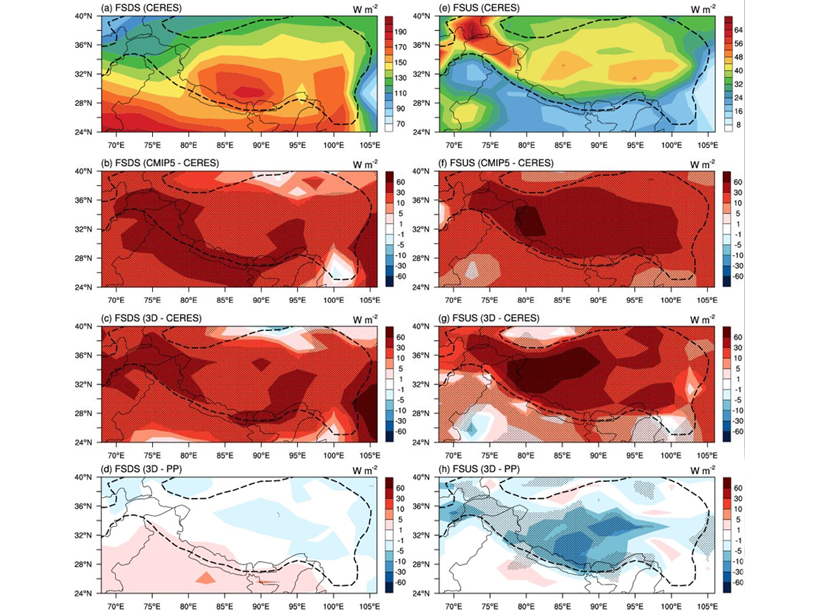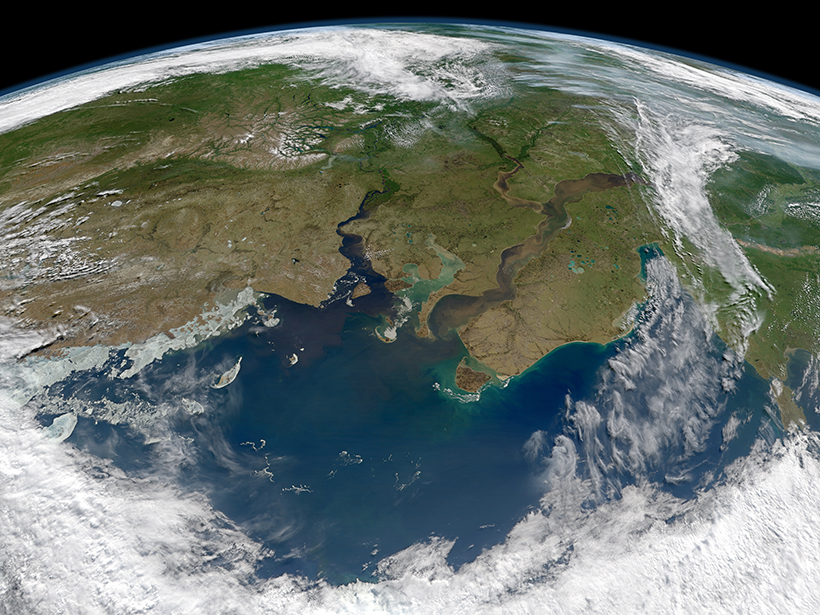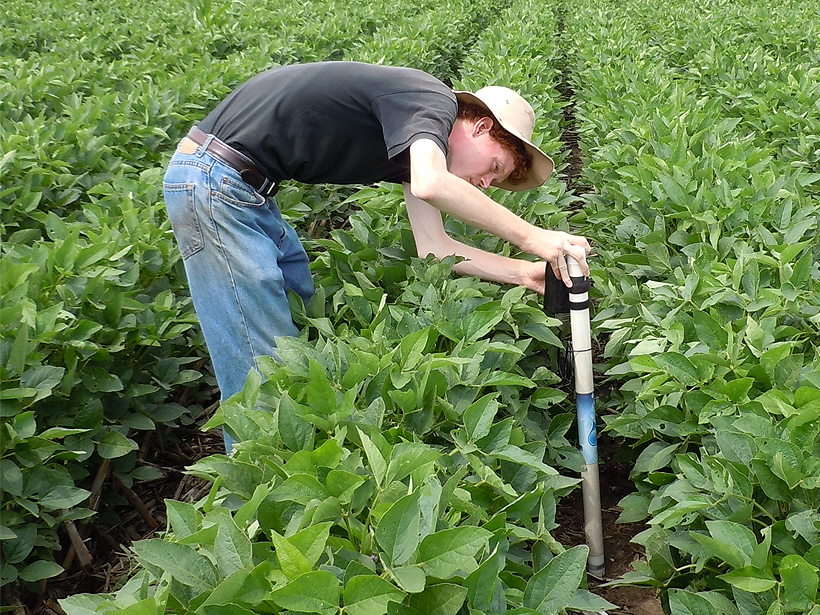Small-scale collisions between pools of cold air may play an important role in organizing hurricanes and other crucial atmospheric phenomena, according to newly developed conceptual models.
temperature
Tree Rings Record 19th-Century Anthropogenic Climate Change
Paleoclimate records, observational data, and climate modeling capture the influence of human activity on temperature seasonality.
Global Warming Hits Marine Life Hardest
The lack of thermal refugia in the ocean means marine life has nowhere to escape from rising sea temperatures.
New Eyes on Wildfires
Onboard machine learning and compact thermal imaging could turn satellites into real-time fire management tools to help officials on the ground.
Southern Hemisphere Sediments Show Surprising Pliocene Cyclicity
New, high-resolution paleoclimate reconstructions with 100,000-year rhythms may offer insights into how Earth’s climate system operated during a time when the planet was warmer than it is today.
Atacama’s Past Rainfall Followed Pacific Sea Temperature
This is the first paleoclimate record of precipitation near Atacama’s hyperarid core and suggests that its moisture source is different from that of the Andes.
Late Cretaceous Extreme Warmth at High Southern Latitudes
New proxy data indicate sea surface temperatures at high southern latitudes reached over 35°C during a period of extreme greenhouse climate that began about 100 million years ago.
3D Radiation-Topography Interaction Warms Up Tibetan Plateau
3-D radiation-topography interaction, which can increase the sunlight absorption by the surface, is missing in all climate models, causing strong cold biases over the Tibetan Plateau.
How Yellowing Seas Will Affect Ocean Temperatures
Materials that trap solar heat at the sea surface could cause more extreme temperatures.
Are Soil Moisture and Latent Heat Overcoupled in Land Models?
A novel statistical approach demonstrates how to reduce bias in remote sensing estimates of soil moisture and latent heat flux coupling strength and clarifies the relationship between the variables.


